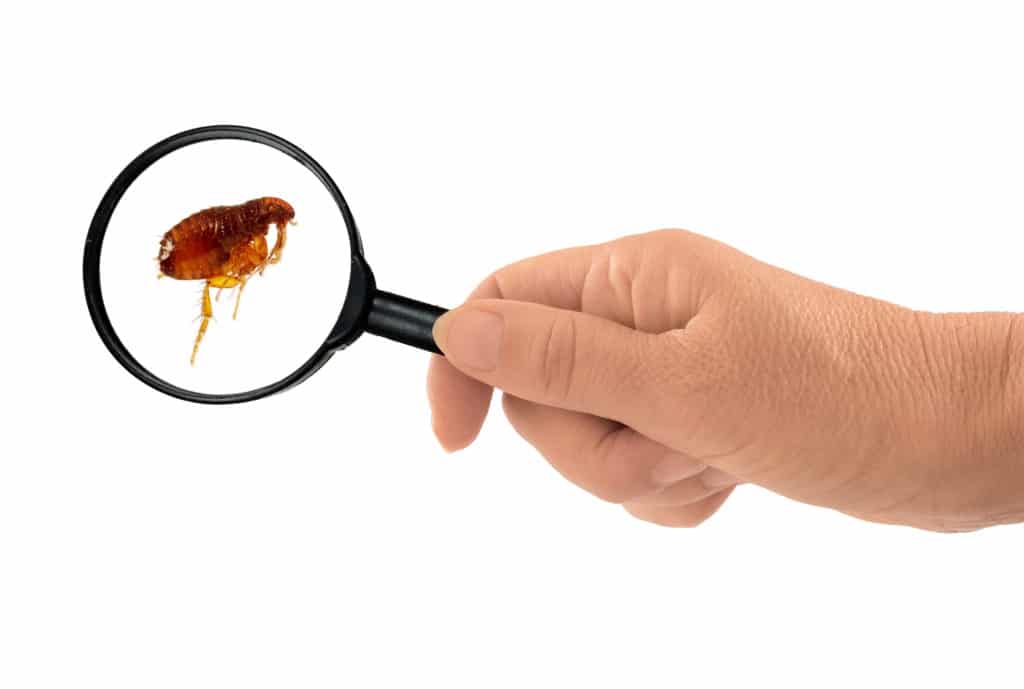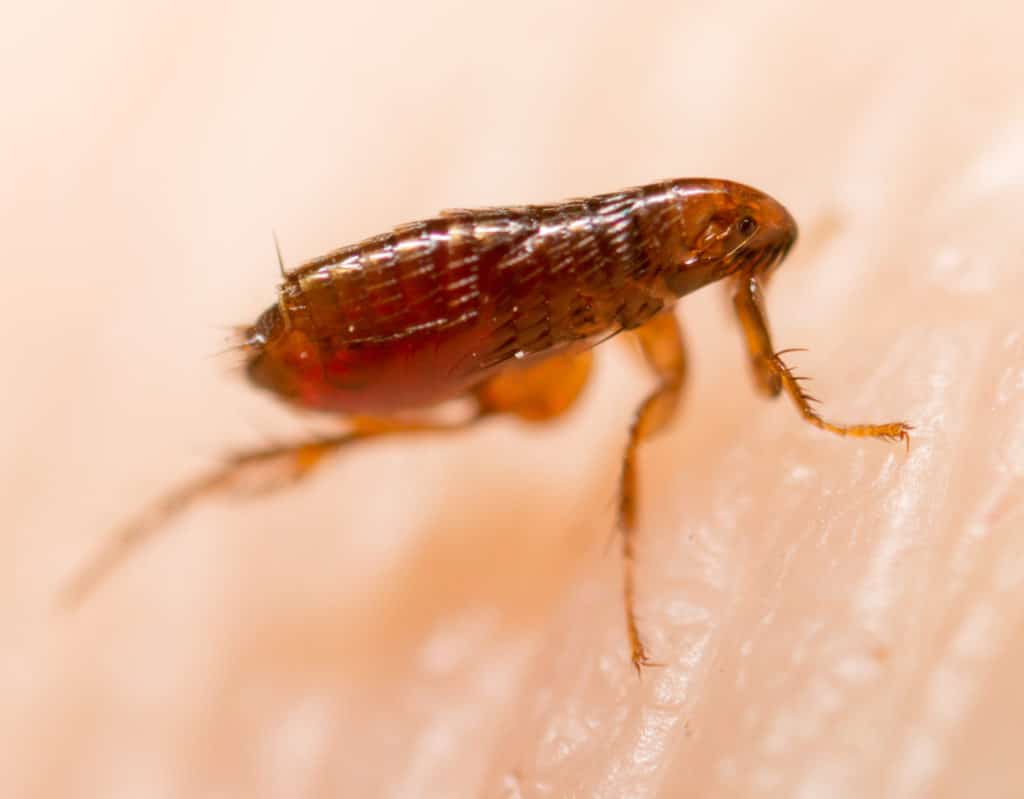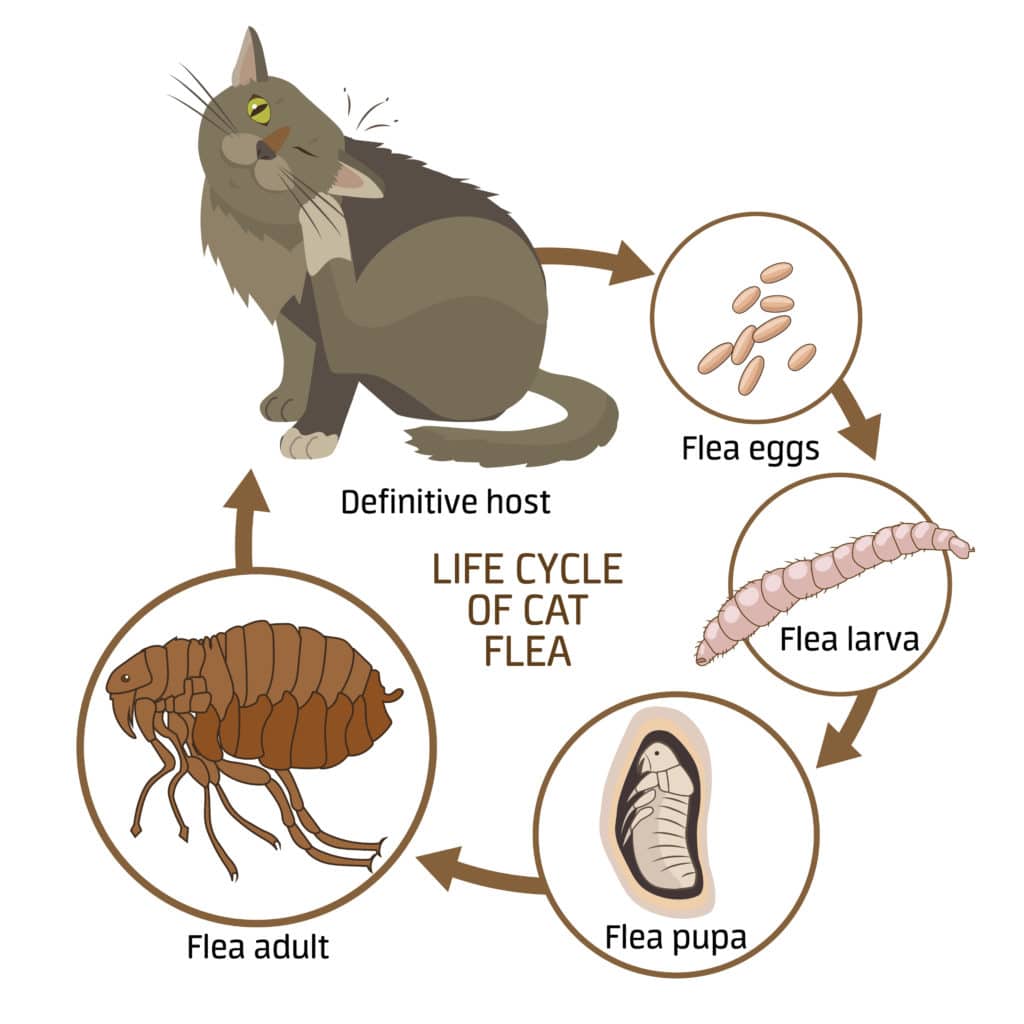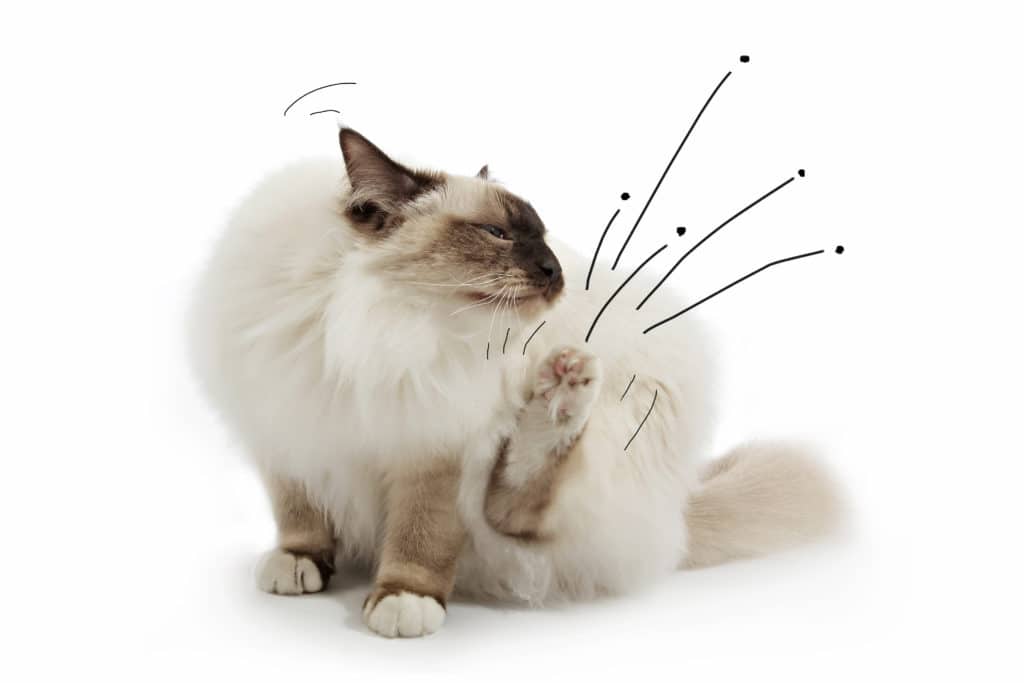TevraPet
Fleas 101: Protecting your Pets and Home
A Flea Control Guide for Pet Parents
Flea prevention is a huge concern for pet owners everywhere, and with good reason! Fleas are the most common external parasites affecting our dogs and cats, and they’re more difficult to get rid of than most of us realize. This article is designed to educate pet parents about fleas and methods of flea control. We’ll discuss their life cycle and explain exactly what concerned dog and cat owners need to know about prevention. We’ll also provide concrete and effective advice for dealing with flea infestations.
Flea Bite Side Effects
Aside from the fact that fleas are disgusting and very uncomfortable, they can cause lots of problems for you and your pet. Fleas can give your pet tapeworms if he ingests them. Tapeworms are an intestinal parasite that causes significant malnutrition if left untreated. Also, fleas carry a lot of bacteria, which can cause all kinds of health problems for animals and humans.
The most common side effect of a bite is something called Fleabite Dermatitis, which is an allergic reaction to the bites. This rash causes extra discomfort and itching for our pets and can take weeks to completely irradicate.
Understanding the flea life cycle
The best way to protect your dog or cat from fleas is to learn all about them. Fleas affect our dogs and cats more than any other external parasite, most likely because their life cycle is so short, and they lay so many eggs.
Generally, one adult can lay up to 50 eggs per day!
A female will lay her eggs in the fur of her host, which could be your pet. Their eggs are small, white, and about the size of a grain of sand. Typically, they make up about 50% of any given flea population, and many insecticides don’t work on them. As your pet moves about your home and yard, the eggs will fall off of him and imbed themselves in carpets, bedding, or anywhere else your pet spends his time.
Locating a product that has been proven to kill eggs is essential in order to get rid of them entirely.
Flea eggs take anywhere from 2 days to two weeks to develop, waiting to hatch until environmental conditions are ideal. In the case of fleas, ideal means warm and humid, so eggs hatch more quickly in those environments, and take longer in dry, cool climates. Once they do hatch, they enter the larval stage of their life cycle.
Flea larvae can be up to ¼ inch long and are almost see-through, making them difficult to detect. They’re also blind and avoid the light whenever possible. Larvae make up about 35% of the population in an average household. If conditions are favorable, they’ll take around 5 days to spin their cocoons and enter the pupae stage of their life cycle.
Fleas in this final developmental stage account for 10% of the population in a home. Adult fleas generally emerge from their cocoons in just a few days if a host is readily available for them to feed on. Fleas can live in their cocoons for months at a time if they can’t detect a suitable host, which is another reason these parasites are difficult to kill. The cocoons have a sticky outer coating that makes them difficult to vacuum or sweep away. It’s also important to know that cocoons can protect their inhabitants against pesticides and other chemicals.
Once a flea has emerged from the cocoon, it will need to feed on a host within a few hours. Shortly thereafter, they’ll begin breeding, and the life cycle will continue. Adults only makeup about 5% of a given flea population and can live anywhere from a few weeks to several months on their host. They are by far the easiest to identify and kill.
Locating and Identifying Fleas

The easiest way to tell if your pet has fleas is to observe his behavior. If he’s scratching himself more than usual, chewing on himself, or acting uncomfortable, he might have fleas. It’s important to remember that some animals don’t scratch themselves, even if they have fleas. If you’re grooming your pet, and you notice black specs on his skin or in his fur, you may be looking at flea dirt.
Flea dirt is composed of excrement or digested blood and is a sure sign that your pet has some unwanted new friends. To double-check for flea dirt, wet a Q-tip and touch the black specs with it. If the Q-tip turns red, you’re looking at flea dirt. If you notice flea dirt on your pet, he for sure has fleas, even if you don’t actually see any insects. In extreme cases, you may notice them in the carpet or on bedding.
The Power of Flea Prevention
Using a high-quality flea preventative is the best way to deal with fleas! These products help keep the fleas away from your pet to begin with. If they do land on him, the medication will kill them quickly, so your pet doesn’t get infested. Here are some key things to know about various preventatives.
- They come in many forms, including topical, flea collars, flea sprays, and pills.
- Make sure the product you choose kills fleas on contact. These products are most efficient when it comes to killing fleas.
- If you have a dog, use flea prevention for If you have a cat, use prevention specific to cats
- Purchase a product designed for your pet’s size and weight. For example, if you have a large dog, purchase a flea preventative for large dogs within their weight parameters.
- No matter which product you choose, follow the directions carefully.
If you’re not sure which type of prevention to try for your dog or cat, here are a few things to keep in mind. Topical products, which come in little tubes that you squeeze on your pet’s back, are the most commonly used. They need to be applied each month. Collars are probably the most convenient. They last for several months at a time, which makes life easier for you, but the collars can come off, which could be a problem if not noticed right away. Flea sprays need to be applied weekly but work well in conjunction with a topical product or collar.
Pills can sometimes be easier to give your pet, but they don’t kill on contact. That means fleas won’t die unless they actually bite your pet. If you’re a pet parent that has concerns about chemicals, there are natural preventatives available for dogs and cats. We strongly recommend using a pest preventative year-round, even if you live somewhere with a dry climate or cold winter. This is especially true if you travel with your pet, board him, or take him to dog parks.
Treating Infestations
Prevention is incredibly important, but what if your pet already has fleas? Not to worry, we’re here to help! First of all, remember that these bugs are hardy and creative when it comes to finding hosts. If you notice them on one pet, we recommend treating all your pets, just to be safe.
Take your pets to your veterinarian for a quick exam. It’s important to be sure your dog or cat doesn’t have fleabite dermatitis or any other flea-related illness. Your vet can also prescribe medication to kill fleas. This medicine is generally more powerful than monthly flea treatments or bug collars.
Once you’ve gotten the all-clear from your vet, bathe your pet with flea shampoo. This shampoo is specially designed to kill these pests without harming your pet’s skin or coat. Use a flea comb to get rid of as many dead fleas and eggs as possible. If your dog is wearing a flea collar, take it off during the bath. These collars are waterproof, but they may not last as long if they get really wet. As with most preventatives, shampoos are available in both traditional and natural forms.
You can also use a flea spray to help make sure all the fleas on your pet have died. For best results, wait 24 hours after bathing before applying the flea spray. Make sure to purchase dog products for dogs and cat products for cats. Read the label carefully and follow all directions. We recommend wearing rubber gloves if possible. Be careful to keep the spray away from your eyes and wash your hands after treating your pet.
Treating Your Home
If your pet is infested, your home and yard are as well. In order to get rid of all the fleas, you’ll need to treat your home and yard along with your pets. Here are the steps you’ll need to take.
- Vacuum everywhere! This includes carpets, hardwood floors, and baseboards. Vacuuming will suck up fleas in all stages of the life cycle. Also, the heat the vacuum puts out causes fleas in the pupa stage to shed their protective cocoons, making them susceptible to chemical treatments. If your vacuum has a bag, dispose of it in an outdoor trash can. If not, empty the canister outside whenever possible.
- Wash everything in hot water. This includes all pet bedding, all human bedding, decorative blankets, etc. If you can wash it, do so. Soap and hot water are great ways to kill them! Don’t treat pet or human bedding with any products.
- Treat your home with an insecticide. Whether you call the exterminator or do it yourself, you’ll need to treat your home with some sort of insecticide. Make sure the product you use kills all stages of the life cycle. Be sure to read the label and follow all directions carefully.
Treat Your Yard
If you have a yard, you’ll want to treat that as well. Be sure to mow the grass before applying treatments. Do your research before you begin this process if you’re planning to do it yourself. Hiring a professional exterminator will likely give you the best results. Give special attention to flower beds, wooded or shady areas, and ground cover. You may need to water your yard in order to activate the insecticides, so be sure to read the instructions carefully!
Hopefully, this article has helped you learn about flea prevention and control. If you have questions about which product to use on your dog or cat, how to deal with an infestation, or any other concerns please contact us. We’re here to help your dog or cat live a happy, pest-free life!


